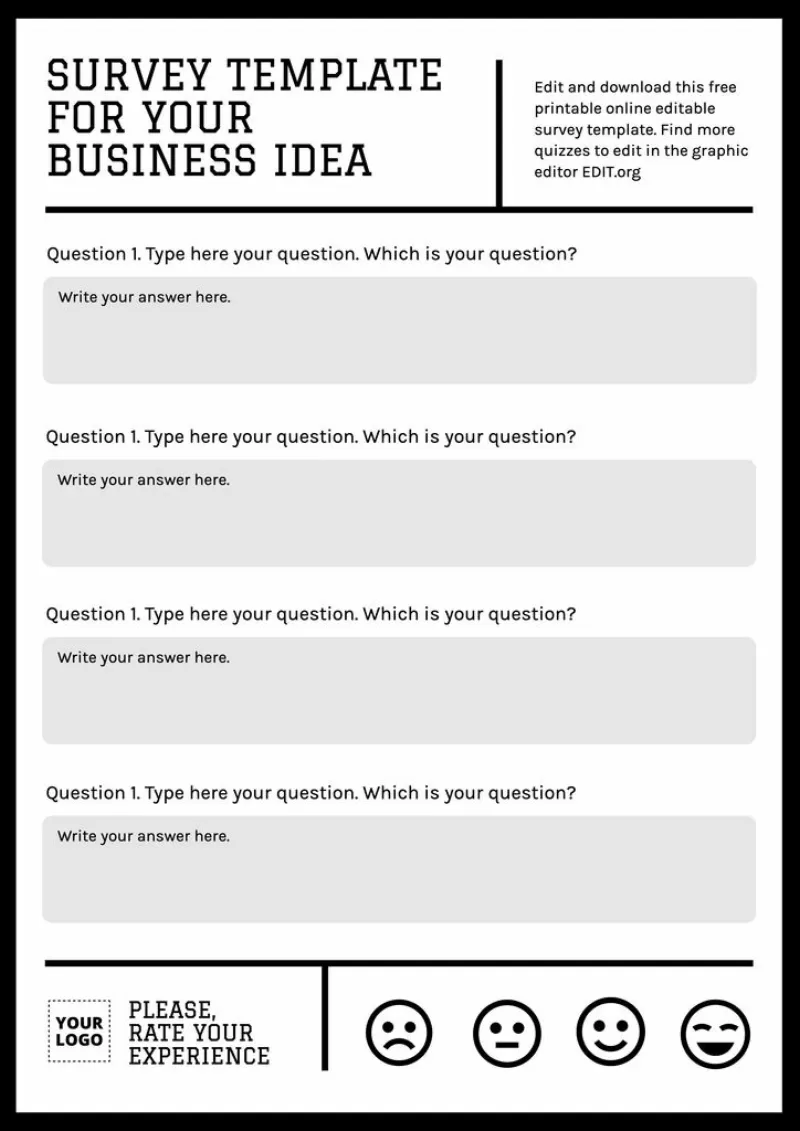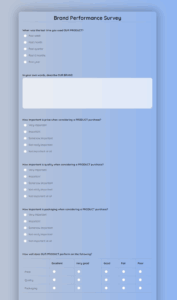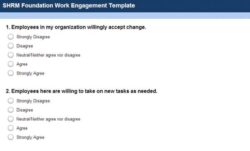Remember the days of printing stacks upon stacks of survey questionnaires? The paper costs, the ink cartridges, the sheer time spent distributing them, and then the monumental task of manually tallying all those responses. It was a tedious process, often leading to delays and environmental concerns. Thankfully, those days are largely behind us, as modern technology offers far more efficient and eco-friendly alternatives.

Today, the quest for a robust and effective survey template without printing so many pages is not just a dream but a practical reality. Whether you’re gathering customer feedback, conducting market research, or simply looking for opinions from your team, digital solutions have revolutionized how we collect and analyze data. You can now create professional-looking surveys that reach a wider audience, all while keeping your budget and the planet happy.
Embracing Digital Survey Tools for Seamless Data Collection
The shift from paper to digital surveys is more than just a trend; it’s a smart move for anyone looking to gather insights efficiently. Gone are the days of worrying about printing errors, illegible handwriting, or lost forms. Online platforms provide a streamlined process from creation to analysis, making your life significantly easier. They save you money on materials and labor, reduce your carbon footprint, and often deliver quicker results.
Think about the sheer variety of tools available at your fingertips. Platforms like Google Forms, SurveyMonkey, Typeform, and Jotform offer intuitive interfaces that allow even beginners to design sophisticated surveys. These tools come packed with features, from various question types to logic branching, ensuring you can tailor your survey precisely to your needs. Plus, many offer free tiers that are more than sufficient for most small to medium-sized projects.
Creating a survey template on these digital platforms is surprisingly straightforward. You typically start by choosing a template or building from scratch, then drag and drop different question types into place. You can customize themes to match your brand, add images or videos, and even set up automatic notifications for new responses. The learning curve is minimal, and the potential for professional-looking outcomes is high.
Once your survey is live, distribution is a breeze. You can share it via a direct link, embed it on your website, or send it out through email campaigns. Responses are collected in real-time, meaning you can start analyzing data almost immediately. Most platforms also provide built-in analytics tools, generating graphs and summaries that make interpreting your results simple and actionable. This immediate feedback loop is invaluable for quick decision-making.
Key Advantages of Digital Survey Templates
- Cost-Effective: Eliminates printing, postage, and manual data entry expenses.
- Time-Saving: Quicker creation, distribution, and response collection.
- Environmentally Friendly: Reduces paper consumption and waste.
- Wider Reach: Easily shareable across various online channels.
- Enhanced Data Accuracy: Minimizes human error in data input.
- Automated Analysis: Most platforms offer instant reporting and visualization.
- Flexibility: Easy to modify or update surveys even after launch.
- Security: Many platforms offer robust data security and privacy features.
Crafting Your Ideal Digital Survey Template for Maximum Impact
While the tools make creation easy, designing an effective digital survey template requires a bit of thought. Your primary goal should always be to create a template that encourages completion and provides clear, actionable data. This means focusing on user experience, question clarity, and logical flow. A well-designed template can significantly boost your response rates and the quality of the insights you gain.
Start by clearly defining your survey’s objective. What specific information do you need to gather? Who is your target audience? Knowing this upfront will help you select the right question types and structure your survey logically. For instance, if you’re assessing product satisfaction, you’ll want a mix of rating scales, multiple-choice questions, and open-ended feedback opportunities.
The choice of question types plays a crucial role. While multiple-choice and rating scales are great for quantitative data, don’t shy away from open-ended questions for qualitative insights. Use conditional logic to show or hide questions based on previous answers, making the survey more relevant for each participant. Keep questions concise and unambiguous, avoiding jargon or leading statements that could skew responses.
Presentation matters immensely. Ensure your survey is mobile-friendly, as a significant portion of respondents will likely complete it on their smartphones. Use clear fonts, sufficient white space, and a logical progression of questions. Break long surveys into sections or pages to avoid overwhelming participants. A progress bar can also be a helpful visual cue, letting respondents know how much more they have left to complete.
Before launching, always test your survey. Send it to a few colleagues or friends to gather feedback on clarity, length, and technical functionality. Check for any typos or broken links. A smooth, error-free experience will reflect positively on your organization and encourage higher completion rates. Remember, a well-thought-out survey template is an investment in obtaining valuable information efficiently.
- Clearly Define Your Objectives: What do you want to learn?
- Know Your Audience: Tailor language and complexity.
- Keep it Concise: Avoid unnecessary questions.
- Use Appropriate Question Types: Mix qualitative and quantitative.
- Implement Logic: Guide respondents through relevant paths.
- Optimize for Mobile: Ensure responsiveness across devices.
- Brand Your Survey: Use logos and consistent styling.
- Test Thoroughly: Check for errors and user experience.
- Provide an Estimated Completion Time: Respect participants’ time.
Moving away from the traditional paper-based methods opens up a world of possibilities for data collection. The convenience, speed, and analytical power of digital platforms truly transform the way businesses and individuals gather feedback. No longer are you constrained by physical limitations or the laborious process of manual data entry.
By leveraging these modern tools, you can create, distribute, and analyze your surveys with unprecedented ease and efficiency. This not only saves resources but also ensures you get richer, more immediate insights. Embrace the digital age of surveys, and you’ll find that gathering the information you need becomes a much smoother, more rewarding experience, all without a single page needing to be printed.


